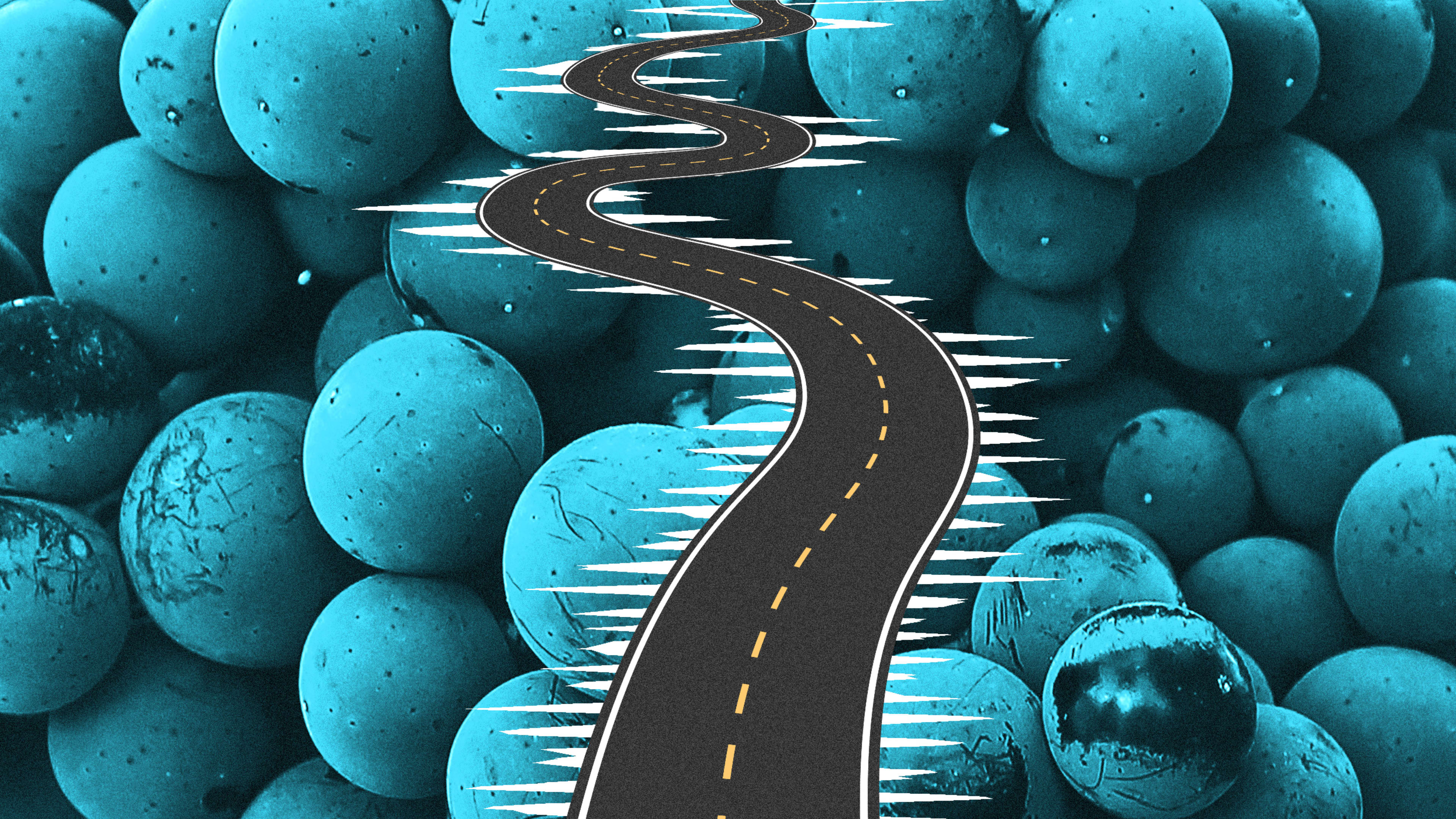Sodium chloride (or as you might know it: salt) is an important ingredient for helping get around in the winter. Spread on roads, it lowers the freezing point of ice, making it melt faster and making roads safer. But all that salt can also be harmful—not only is it corrosive to pavement, concrete, and steel, it can wash into lakes and streams or seep into our groundwater, contaminating water supplies and threatening aquatic life. Still, road salt use has been increasing—in the United States alone, it’s estimated that we currently use between 20 and 27 million tons of salt on our roadways each year. But a little reuse of agricultural waste could help mitigate the problem.
Researchers at Washington State University have developed a way to turn grape skins and other waste like sugar beet leaves or apple pomace (that’s what remains after pressing apples for cider or juice) into a solution that makes road salt more effective, so each road needs less. That means less road salt entering our waterways and degrading our asphalt, bridges, and cars.
Xianming Shi, an associate professor in civil and environmental engineering at Washington State University, first looked into a road salt alternative a few years ago for a project sponsored by the Alaska Department of Transportation. The department had a unique challenge: temperatures in Alaska would get too low for road salt to work, so they needed a more powerful solution. But magnesium chloride (a more effective deicer than salt) or additives that make road salt work better were too costly. Shi’s team ended up developing a way to turn discarded peony leaves—which is a big product in the state— into a nontoxic solution of chemicals that can be added to regular road brine. The result is a solution that is more effective as a deicer than traditional road salt, while using less sodium chloride overall.
A natural fermentation process breaks down the agricultural waste, and through the work of bacteria, it ends up as a liquid mixture of chemicals, without creating any new waste along the way. “You just take that and dump it into the salt brine at a certain ratio, and the salt brine becomes more powerful and less detrimental,” he says, estimating that what once took 40 gallons of road salt could then be handled by just 30 gallons.
This isn’t the only effort to find a road salt alternative: Some municipalities have been using beet juice as a deicer because the sugars in the juice have the same effect as chlorides of altering the melting point of ice. But beet juice isn’t a completely environmentally friendly solution, either; when it gets washed away into nearby bodies of water, it still has a harmful impact, because the sugars in beet juice promote the growth of a bacteria that consumes all the available oxygen in the pond, ultimately killing the aquatic animals that need that oxygen. Shi’s grape skin or sugar beet leaf solution doesn’t seem to pose the same risk, but he’s not exactly sure why yet (he says it may have something to do with how his process turns waste into smaller molecules than those found in beet juice).
He and his team haven’t yet explored if you could de-ice roads with just this solution and no sodium chloride, because, Shi says, it would probably need to be a higher concentration of the chemicals, and that wouldn’t be as affordable. Still, he thinks it could be scalable, and he hopes to get the de-icing industry on board. The next step for his team is to get some cities to try this option out, and then hopefully the industry will be interested.
“The trouble is that currently, most decisions are made based on initial costs, so the hidden costs or long-term risks are not [factored] into the decision-making process,” he says. “For the general public, we tend to focus on right now: ‘I want to drive from point A to point B during snowy weather really, really fast. I don’t even think of that demand causing some issues for my future generations.’ . . . Those things need to be more publicized, the hidden costs or social costs, so that the agencies can make a more holistic decision.”
Recognize your brand’s excellence by applying to this year’s Brands That Matter Awards before the early-rate deadline, May 3.
